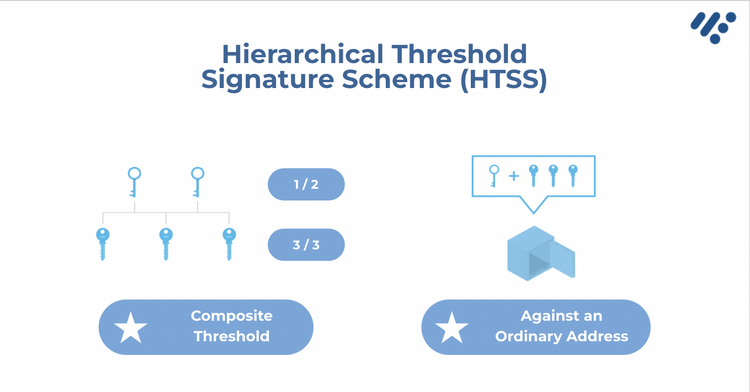

Understanding Custonomy product
 Hermes
HermesTable of Contents
Holdex and Custonomy partnered to provide startups and institutions access to one of the most advanced custody technology available.
When companies deal with self-storage and private keys there are no resets, a lost key is gone forever.
Many crypto-asset hacking incidents in the past have highlighted, that the domain expertise it takes to build crypto custody solutions, and design effective governance controls, is not commonplace in the traditional financial services industry.
Different processes and assumptions are needed to design custody solutions for digital-only assets. Cryptocurrencies are created and managed using specialized technologies that come with their own unique considerations for their storage and security. Users should be aware they may encounter several challenges.
Private key management problems
The management
Lost or hacked private key is always users’ biggest problems when self managed private keys, like non custodial crypto wallets. Consider the complexity of managing passwords and the frequency at which each user may have their password reset. When dealing with self-storage and private keys there are no resets, a lost key is gone forever.
Self-custody, like keeping cash in your physical wallet or locked in a drawer, poses its own risks. There is no third-party involved to manage that risk (or your funds) if you lose access to your keys, experience a destructive event like a fire or power outage, or pass away unexpectedly.
Lose autonomy
Many enterprises lack the knowledge or capability to manage their own keys, so they will choose to outsource or delegate this task to someone else who has better knowledge such as a custodian. However, by doing this, enterprises not only hand over the responsibility to third parties but also lose full control of their own assets. Using a custodian will impose limitations or dependencies that may impact the response time to the market.
Safe but inefficient
Cold wallets significantly lower the risk of unauthorized transfers through physical security and role-based control over key access. However, offline solutions are generally slower to execute on instructions because their key-storage systems can only be accessed at their physical locations.
In view of this, Custonomy provides another option in managing the key thanks to its proprietaryr key management solution by allowingenterprises to co-manage their keys with multiple parties, both internal and external. With this new way, enterprises can manage their keys as well as enjoy the governance processes that are imposed by third-party custodians and retain their autonomy.
Custonomy features
Custonomy provides a self-managed wallet that offers institutional control and protection features:
- Framework agnostic
- Multi-party computation (MPC)
- Multi-assets support
- Autonomy
Framework agnostic
Custonomy enables enterprises to fulfill regulatory requirements and anticipate future compliance changes. With Customony it is easy to scale and stay relevant when embracing innovation.
Multi-party computation technology (MPC)
Custonomy enables customers to secure their crypto assets with flexibility by eliminating the private key concepts. Thanks to its MPC technology. Custonomy and its users independently generate key shards that will be used for transaction signing. The private key will never be reconstructed in one place which eliminates the risk of a single point of compromise.
Multi-assets support
Custonomy can support all kinds of assets ( crypto currencies and NFTs) and all chains with ECDSA and EdDSA signature standards: Bitcoin ($BTC ), Bitcoin Cash ($BCH ), Ethereum ($ETH ), Binance Smart Chain, Solana ($SOL ), Filecoin ($FIL ), and major EVM chains.
Autonomy
Custonomy enables users to have complete autonomy without compromising security. The solution comprises an authorization workflow engine that allows users to define different levels of policy, for example, address-, transaction-, time- or user-based rules.
Product Features
The most notable feature is the unique, patent-pending MPC threshold key management scheme. Based on the Hierarchical Threshold Signature Scheme (HTSS), Custonomy has developed a threshold key management scheme that allows multiple tiers of threshold signing authorities, the first-ever of its kind that has ever been introduced in the market. The multi-layer Threshold Scheme controls a set or a particular secret share that is mandatory and cannot be bypassed. All these desired properties are embedded mathematically in the cryptography of the MPC protocol. That makes this key management solution flexible for different use cases.
HTSS is a solution that meets all main requirements proposed by enterprises. The concept originated from academic research which studied the problem of threshold secret sharing in groups with a hierarchical structure. The main principle is that the secret is shared among a group of participants and partitioned into levels to work against a single address virtually.

Another flexibility offered by HTSS is the possibility to enable systems to have signing power to process the transaction. For example in the second level of the scheme, signing power is given to KYC, AML, and Anti-Fraud. That makes all transactions more automated, compliant, and secure. There are several levels in the signing scheme based on a company’s needs. And the threshold for each level can be customized by an enterprise.
To sum up, Custonomy’s HTSS allows an enterprise to add a tier of regulatory nodes as mandatory to ensure full compliance of transactions. And the beauty is that everything can work natively as a usual address in the public chain. Unlike multi-sig, Custonomy’s solution doesn’t leave any footprint of the policy and signing rules in the blockchain. Lastly, by using the threshold signing, Custonomy prevents fraudulent key usage, the primary problem of crypto protection. Therefore, this solution not only provides an ultra-secure key management platform but also revolutionizes the way the enterprise complies with crypto regulations - by just using the key. No add-on, no plug-in. Pure mathematics.
Custonomy team
Founding Team
- Keith Hung - CEO & Co-founder
- Raymond Lam - Chief Engineer & Co-founder
- Annie Hui - COO & Co-founder
- Calvin Choy - CSO & Co-founder
Investors
Partnership with Custonomy
Holdex is very excited to partner with Custonomy for two reasons: value-first-driven spirit resonates with ours, and Custonomy solves a real asset management problem.
The partnership between Custonomy and Holdex aims at providing value to crypto startups and project owners by completing and enhancing the respective product offerings: advisory and blockchain accelerator program by Holdex together with a secure MPC key management solution by Custonomy.
We hope t he collaboration between Holdex and Custonomy will underpin and drive forth development efforts in Hong Kong. We are both committed to working together to promote a safe and smart environment in the crypto ecosystem.
We are really proud of this partnership and we believe we can bring more value to the ecosystem by leveraging our synergies with Holdex – said Keith Hung, Co-Founder and CEO of Custonomy.